Effective B2B marketing is a tricky skill to master. The marketing strategy for a business-to-business (B2B) company needs to address the unique challenges of marketing to businesses instead of individuals.
So, what do B2B marketers need to know to master and surpass the basics? Unlike marketing for individuals, B2B customers aren’t a thousand anonymous people. Each account is unique, has the potential to make a big contribution to your bottom line, and has specific pain points to solve. B2B marketing strategies need to be more personalized, and you need to understand who you’re marketing to more than B2C marketers do.
Here at Leadfeeder, we’ve worked with thousands of B2B companies and written 100s of pieces of expert content on effective B2B marketing. In this post, we’ve selected our best articles to create the most comprehensive guide to B2B marketing.
Note: Want to generate more B2B leads from your website? Sign up and try Leadfeeder free for 14 days to see the companies that visit your website, which pages they look at, and more.
What is B2B marketing?
As you probably already know, B2B stands for business-to-business. It refers to any company that sells products and services to other businesses rather than consumers.
B2B marketing helps these businesses to reach, educate, and, eventually, convert their target audience. As the sales cycle for B2B markets tends to be longer, the strategies and tactics used focus on building relationships and trust between businesses and clients. Let’s take a look at the key differences between B2B and B2C marketing in a bit more detail next.
B2B marketing vs B2C marketing
The B2B market operates quite differently from the B2C market. B2C purchases are mostly made by individuals for emotional reasons or to fill an immediate need, for example, buying food because you are hungry.
The B2B market sales cycle takes much longer because the transactions normally involve multiple decision-makers driven by logic and ROI. Organizations are often spending large sums of money on long-term solutions to their problems. They want to trust the expertise of their provider and be certain that the product will fulfill their needs.
This means that a B2B marketing approach needs to focus on communicating the worth of products to prospective clients in order to guide them down the B2B marketing funnel. Let’s look at how you can achieve this.
How can you develop effective B2B marketing strategies?
Much of the advice you’ll find on developing a B2B marketing strategy is really just lists of marketing tactics. Those can be useful, but tactics alone aren’t worth much if they aren’t tied together by a cohesive and overarching B2B strategy that drives them.
For one, separate B2B marketing tactics don’t necessarily work together cohesively toward the same goal—moving leads through the B2B sales funnel.
Without a concrete strategy for all of your marketing efforts, your team will be hard-pressed to work together toward the same end-goals.
Without a focused strategy from the outset, there’s really no way to know if you’re even using the right tactics for your target audience.
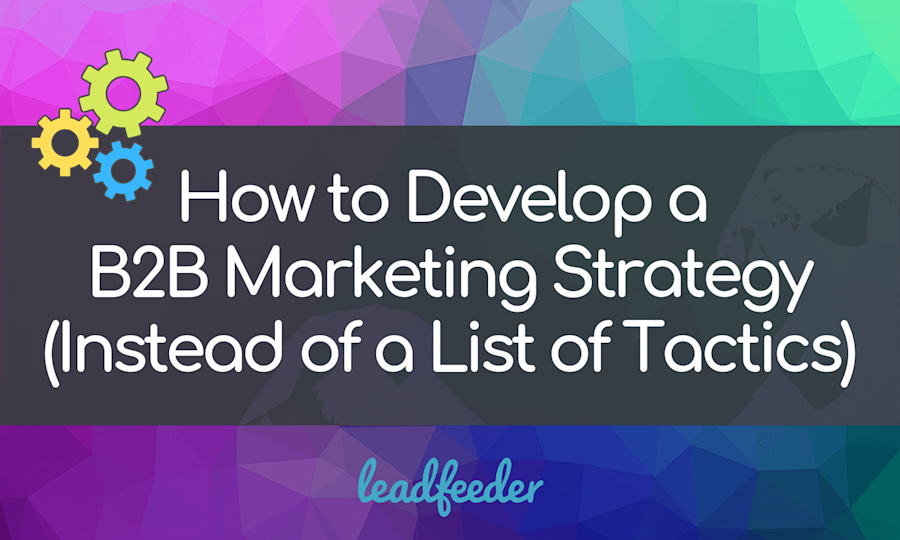
In our article on developing B2B marketing strategies, we lay out the eight key steps you need to follow to get started with a successful B2B marketing strategy.
Building B2B buyer personas
Once you’ve built out your B2B digital marketing strategy and you know who your audience is, the next step is always to take a deep dive into who those decision-makers really are. What are their jobs? What are their goals? What challenges or pains do they worry about? Where do they spend time online? What publications or blogs do they read? What podcasts do they listen to? Are they purchase decision makers or decision influencers?
Without the answers to those questions (and a lot more), you can’t know whether the marketing channels, tactics, and messaging you use will actually help you reach and resonate with the right people.
In our article on How to Build a Strong B2B Buyer Persona, we explain how to figure out who your buyers are and what motivates them.
Mapping the customer journey
If there’s one thing with the potential to trip up the entire B2B marketing plan, it’s foregoing the step of mapping out your customer journey. Your buyer’s journey lays out where customers go, the web pages they visit, the conversion points, and more that ultimately leads from a new website visitor to a converted customer. Without a customer journey map, marketers:
Lack an organized way to move visitors through the funnel.
Can’t map individual marketing tactics and channels to the buying process.
Struggle to adequately measure the performance of individual assets and campaigns.
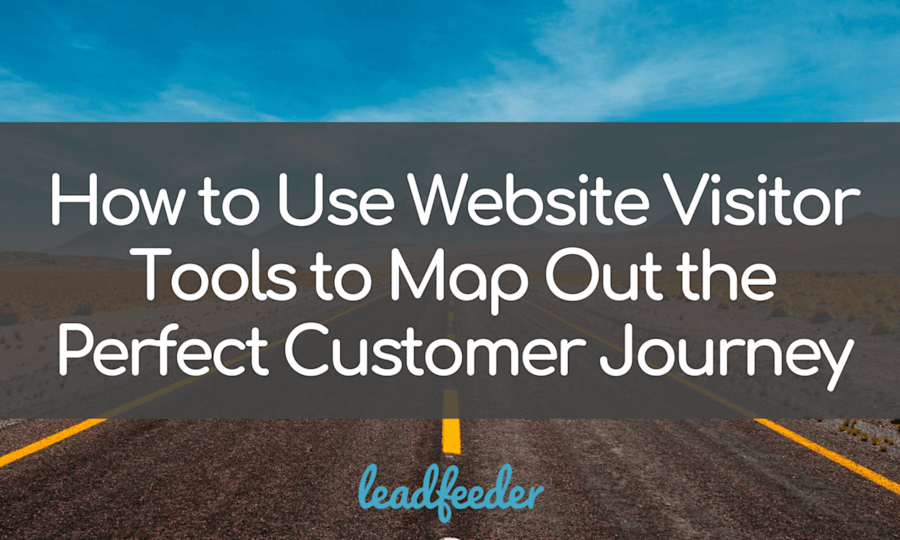
Our post on How to Use Website Visitor Tools to Map Out the Perfect Customer Journey, covers our tried-and-true three step process for using website visitor tools like ours to map out your ideal customer journey.
B2B marketing examples
Whether you’re a new or seasoned B2B marketer, it can be tough to conceptualize new tactics or marketing strategies—without seeing them in the wild. That’s why there’s a lot of content out there showcasing great B2B marketing strategy examples. The problem is, a lot of it is pretty thin, showing an example and telling you it’s great.
But to actually use that information, you need to be able to understand why it’s great and how you can replicate its success.
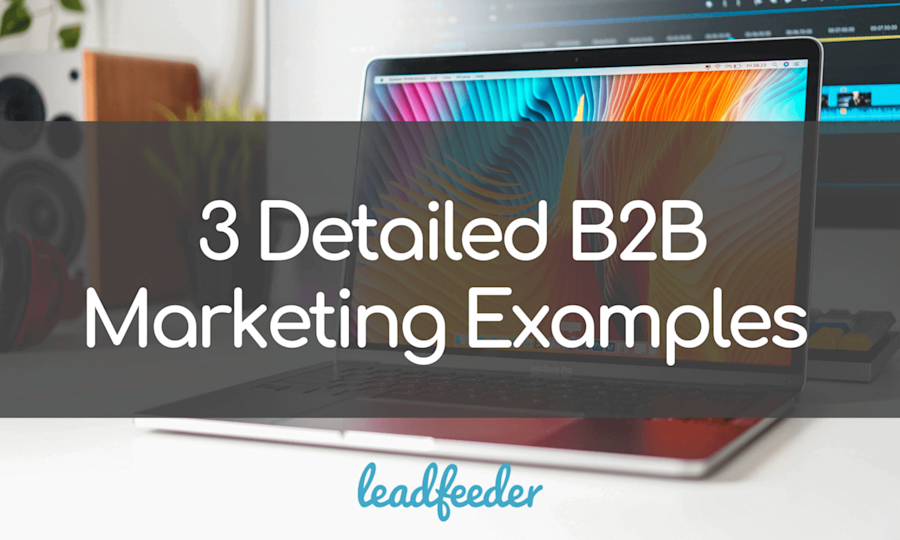
Some of our favourite B2B marketing examples include educational content, offering free trials, and non-written marketing content. Check out our post on Creative B2B Marketing Examples for more details and examples, including case studies from companies that have successfully implemented each one.
B2B marketing tools
Be it measurement, lead generation, or automation, experienced B2B marketers know there’s an entire ecosystem of tools available to help make every aspect of the job easier. Finding the right B2B marketing tools means your efforts can become both more advanced and more effective.
With the guides shared below, you can find the best tools for:
B2B Lead Generation
Account Based Marketing (ABM)
B2B Marketing Automation
B2B lead generation tools
The B2B lead generation world comes with a lot of tools. Seasoned B2B marketers know they need a tool to help (among other things):
Generate leads in the first place
Measure lead generation and quality
Attribute leads to the marketing efforts that drove them
Identify leads by the account (instead of on an individual basis)
Not to mention, there are a lot of lead generation tools out there that cater to B2B needs. While options are always good, that can make it hard to find a solution that offers what you and your team need.
That’s why our giant list of 60+ Top Lead Generation Tools breaks the tools down into 12 categories—to help you find exactly what you’re looking for.
Top tools for account based marketing (ABM)
Those who’ve done account based marketing (ABM) know that it’s fundamentally different from the way most companies approach marketing. After all, the strategy turns the traditional sales and marketing funnel on its head.
For that reason, the ABM B2B marketing approach requires a specific set of tools built with that strategy in mind—but it can be tough to keep track of all the solutions available, how their features complement or overlap with one another, and more.

To help understand and evaluate options for your ABM stack, we pulled together 40 Top Account-Based Marketing Tools. Our list breaks the solutions down into three categories:
Tools that help you build great prospect lists
Tools that help you execute on ABM plans and tactics
Tools that offer the whole gamut of ABM
B2B marketing automation tools
Despite the popularity of marketing automation today, not every business or marketing team truly needs one. So, before you buy into an expensive and robust tool, it’s important to take a step back and assess what your actual needs are. In our experience, you don’t need to invest in B2B marketing technology for automation until:
Your team has at least one person whose sole responsibility is marketing
You’ve found at least one marketing channel that produces results for you
All of your marketing efforts are driven by a clear strategy
Your team has more money than time on their hands
For those who definitely do need a B2B marketing automation tool, which tool you choose depends on your unique needs and use case.
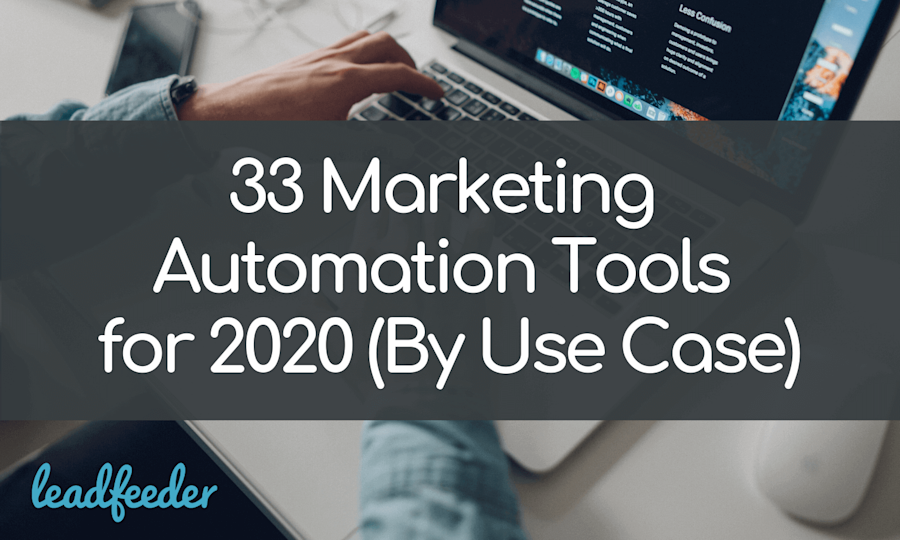
In our article, 37 Marketing Automation Tools (By Use Case), we break your software options down into seven categories—to make choosing a little easier.
Measuring your B2B marketing performance
B2B marketers know that there’s a lot more to measuring your B2B marketing performance than tracking a couple metrics in Google Analytics. Unlike B2C (business-to-consumer) businesses, B2B marketers face an uphill battle because they need to measure performance based on accounts—and that’s not something Google Analytics is built for.
To compensate, B2B marketers need a combination of the right key performance indicators (KPIs) and the right processes to define and measure them.
B2B marketing KPIs to track
There’s a lot of content out there that talks about the best marketing KPIs to track. But the vast majority of that content focuses on the metrics and KPIs that work for B2C marketing. Those aren’t good enough for B2B marketers for a few reasons:
They focus on lead and traffic quantity instead of quality
They consider leads as individuals versus accounts
They measure conversion points that are fewer and less flexible and are designed for a shorter buying cycle

Instead, we believe the three B2B marketing KPIs that are vital to track are:
Marketing qualified leads (MQLs)
Lead quality
Revenue contribute
In You Can’t Measure B2B Marketing with B2C Metrics: 3 B2B Marketing KPIs to Use Instead, we highlight why these essential KPIs are the only three metrics that truly matter for B2B businesses.
How to define marketing qualified leads (MQLs) for B2B marketing
As a seasoned B2B marketer, you’re likely familiar with the challenges often presented when you try to work together with the sales team. As marketing qualified leads (MQLs) get handed over to B2B sales reps and converted into sales qualified leads (SQLs), both marketing and sales have a vested interest in generating and advancing leads who are truly qualified.
But what does “qualified” really mean? The short answer is that it varies from business to business—and the most effective way to figure out what it means for you is to work together with sales.
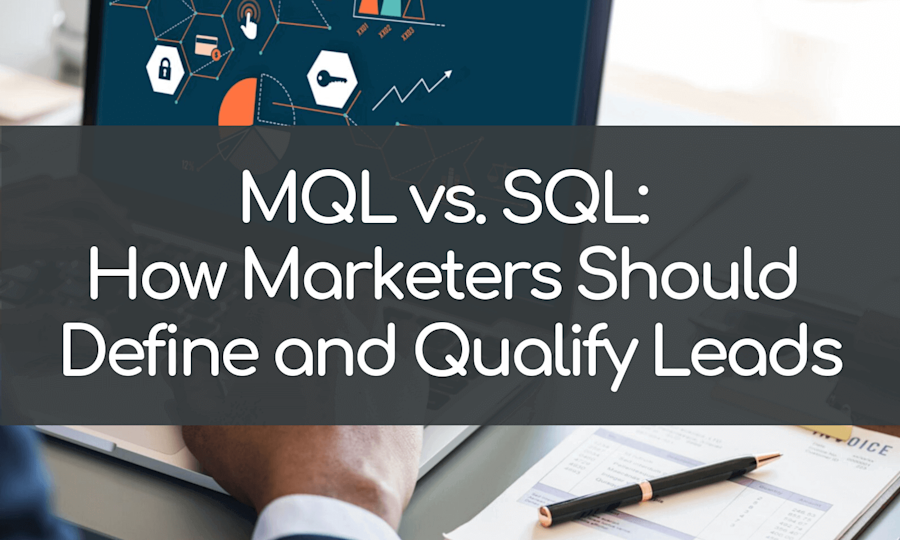
Our piece on How Marketers Should Define and Qualify Leads explains why getting MQL criteria right is so hard, plus how to work with sales to reverse-engineer your lead classification criteria.
How to track B2B marketing with UTM campaigns
It’s no secret that UTM campaigns open up a whole new way of tracking the efficacy of marketing and ad campaigns (like PPC). But, like many other aspects of marketing, they don’t quite cut it for B2B marketers.
Marketers use UTM codes to track the traffic, engagement, and conversion rates per given campaign or asset drive. There are a few problems with that, but most notably for B2B marketers: You can’t connect conversions or any other website activity to the companies behind them.
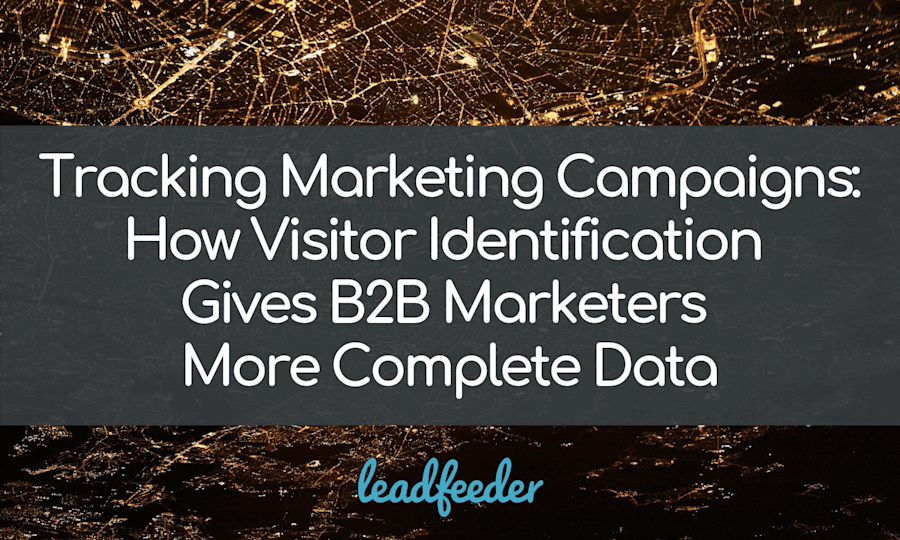
Tracking Marketing Campaigns: How Visitor Identification Gives B2B Marketers More Complete Data explains how visitor identification software can bridge the gap between UTM tracking and B2B. Plus, we show you how to track three different types of B2B marketing campaigns in Leadfeeder.
Marketing attribution models for B2B marketing
Every marketing team needs a way to tie conversions and lead generation back to the marketing campaigns and collateral that drove them. With that goal in mind, it’s easy to make marketing attribution as simple—or as complicated—as you want it to be.
Despite all the complicated multi-touch attribution models to expensive (and often unnecessary) marketing attribution software, most B2B marketers really only need 2 models, and both of them are accessible in Google Analytics.
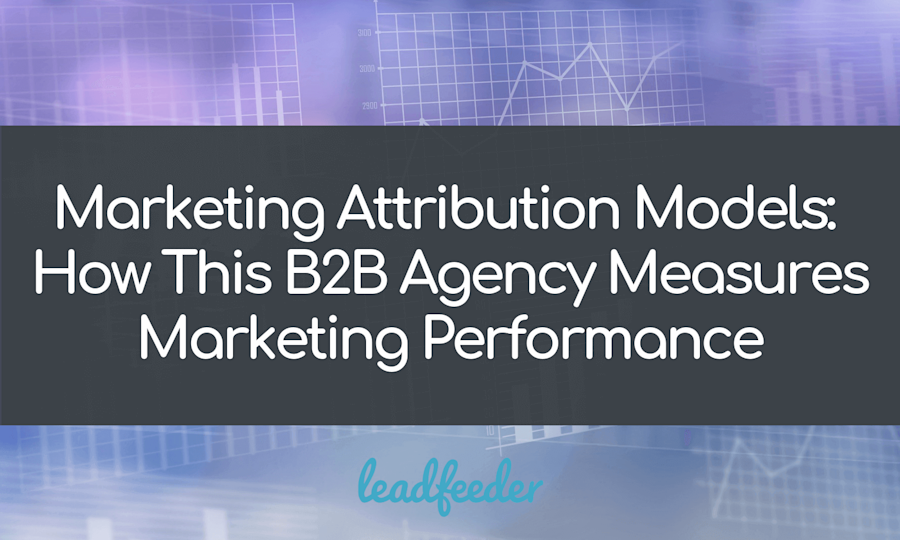
We explained why we recommend marketers use first- and last-click attribution, together, in our piece on Marketing Attribution Models. We also highlight how one B2B marketing services agency does it—so you can follow their lead and set it up for yourself.
Google analytics guide for B2B
Google Analytics is one of those search engine optimization tools marketers can work with for years and still only scratch the surface of what the tool is capable of. From standard reports like channels and behavior, to the more complex behavior flow and conversion attribution, Google Analytics can tell you a lot about your website and marketing performance.
If you’re just digging into Google Analytics for the first time, our Essential Google Analytics Guide for B2B Marketers is required reading. The post details the five main questions Google Analytics answers for marketers, along with how to find or build the reports that answer them.
B2B lead generation and nurturing
With lead generation and nurturing, there’s no shortage of tactics and improvements B2B marketers can make. Getting it right means iterating and testing and measuring to see which B2B marketing tactics work for your company—then further optimizing each of those tactics.
To do that, marketers need to know about all the potential lead generation and nurturing techniques at their disposal. And they need to know how to use those tactics to generate and nurture higher quality leads.
Note: Want to generate more B2B leads from your website? Sign up and try Leadfeeder free for 14 days to see the companies that visit your website, which pages they look at, and more.
B2B lead generation strategies and tactics
When you need inspiration for new lead generation strategies and tactics to test, it isn’t hard to find a list of tactics. But here’s the thing: B2B lead generation isn’t a one-size-fits-all kind of thing. The techniques that produce stellar results for one type of company may not work at all for another.
So, when you’re searching for new ways to get more leads, you need to have an idea of what your business needs and the channels where you’re most likely to find success.
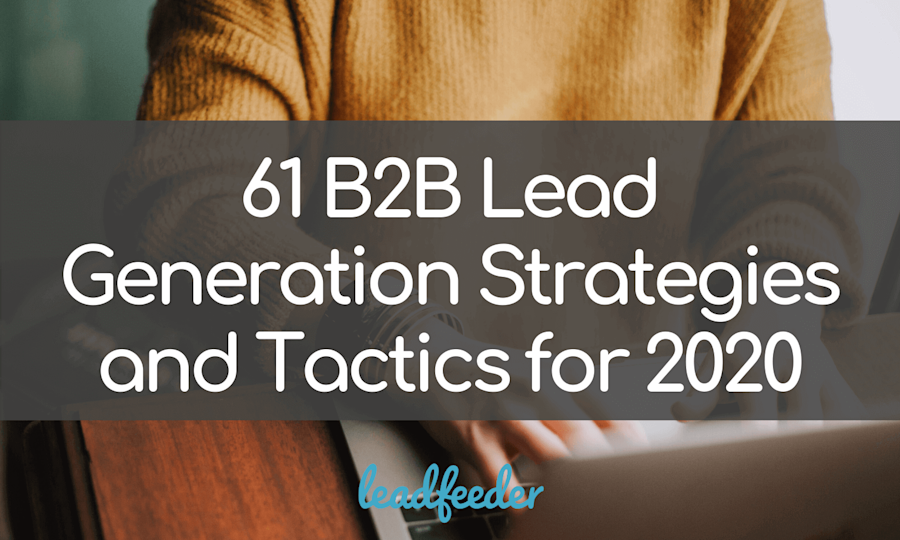
To help, we pulled together 20 of the best B2B marketing tactics for lead generation and sales in 2025 to give you a head start.
B2B lead nurturing tactics
Once you bring those leads in and it’s time to start nurturing, it can be hard to find content that actually addresses lead nurturing. A lot of the articles out there that purport to be about lead nurturing actually end up talking about lead generation instead. But you’ve already done that.
Plus, B2B lead nurturing is fundamentally different than B2C, where “nurturing” often means dumping an individual into an email sequence.
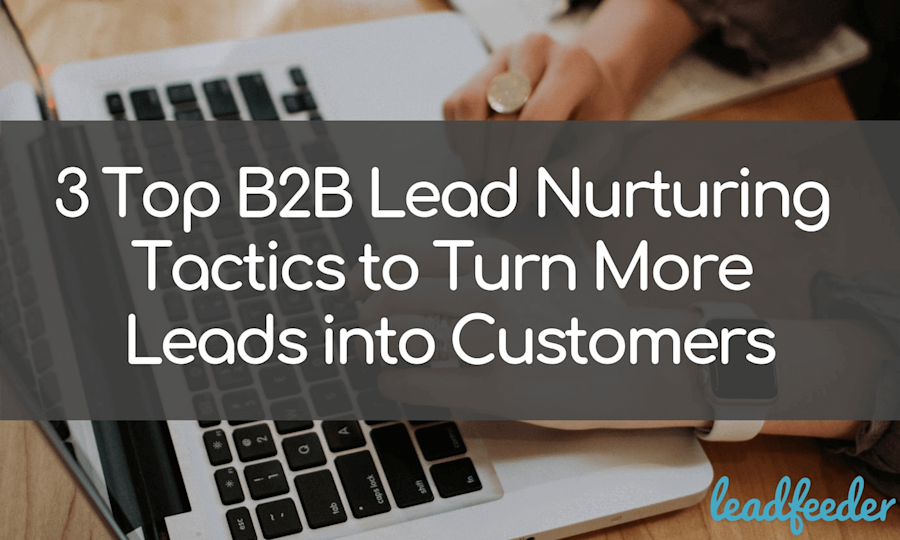
In our post on the Three Top B2B Lead Nurturing Tactics to Turn More Leads into Customers, we share our framework of best practices for lead nurturing. Then we explain the three most effective tactics for nurturing more leads into customers.
How to improve traffic to your B2B website
If you’re like many marketers, you probably measure website traffic as one of your KPIs. That can be useful for some aspects of marketing, but what happens when traffic keeps climbing but lead conversions stagnate? In cases like that, the problem most often comes down to the quality of that traffic. In other words, your marketing efforts may not be driving the right people to your B2B website.
If that sounds familiar, you may have searched around for tips on improving your traffic quality. The problem is, most of the content out there offers tips that are generic at best. The reality is that traffic quality has to be addressed on a channel-by-channel basis.
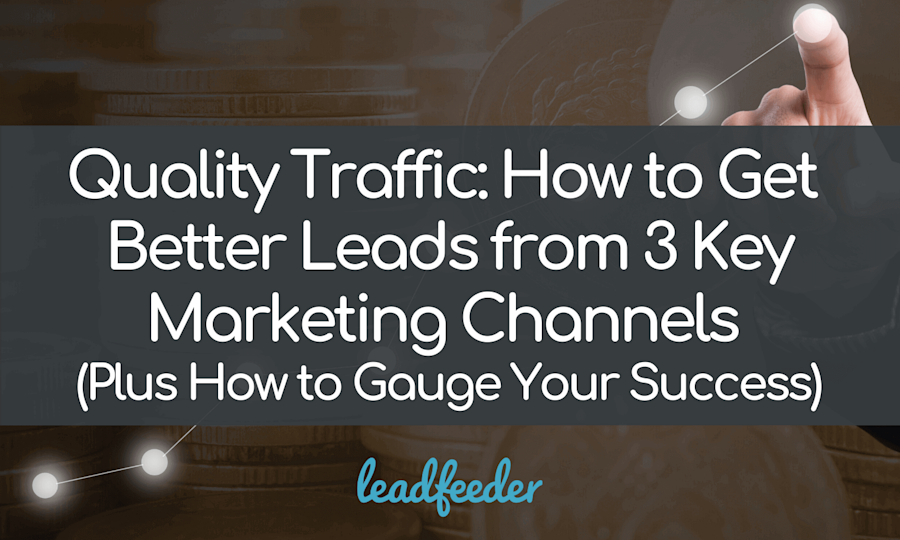
Since we see a lot of our B2B customers struggle with driving high-quality traffic that converts, we put together this guide for How to Get Better Leads from Three Key Marketing Channels (Plus How to Gauge Your Success). In it, we describe how B2B marketers can get better traffic from SEO and paid search campaigns, Facebook Ads, and referrals.
How to generate better leads and measure them
A similar problem we recognized many of our customers struggling with is lead quality. They’re doing all the right things from a lead generation and nurturing standpoint—and getting lead conversions, too. But those potential customers don’t turn into actual customers.
When you’re turning over low quality leads to sales, no one’s happy. And the solution to poor lead quality varies. Typically, we see companies dealing with a particular problem channel or campaign (or several) that are sending poor leads through. So to fix lead quality issues, you need to first identify that problem.

Our blog post on Lead Quality: How to Generate and Measure Quality Leads explains how visitor identification software can help B2B marketers diagnose lead quality issues.
Account Based Marketing (ABM)
Account based marketing is one B2B marketing approach that turns the well-worn inbound marketing funnel on its head. It’s a fundamentally different process from what many B2B marketers do—and that means it requires an entirely different strategy and set of tools.
In our experience working with hundreds of marketers who do ABM, we’ve seen a couple of key issues that get in the way of successful ABM strategy:
They don’t have a solution for tracking the behavior of target accounts.
They struggle to make traditional marketing techniques work for them.
Those are big challenges for most of the companies using ABM, so we addressed them on our blog.
The missing link in account based marketing strategies
We’re admittedly a little biased here, but there’s no denying that visitor identification software can seriously change the game for marketers using ABM. Lack of insight into target accounts and performance is one of the biggest limitations facing ABM campaigns—and we’ve seen a lot of marketers disappointed with their results because of it.
Visitor identification can change that, enabling you to:
Uncover and better understand your target accounts.
Better target your social media and display ads to accounts, rather than individuals.
Assess the performance of your ABM campaigns.
Create better alignment between marketing and sales.
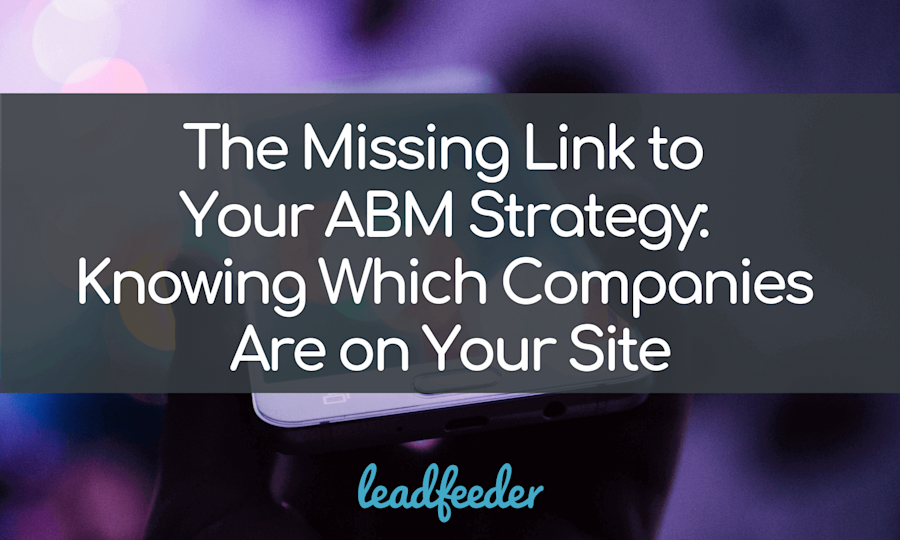
Our article, The Missing Link to Your Account Based Marketing Strategy: Knowing Which Companies Are on Your Site, explains the best ways to use visitor identification to supercharge your ABM efforts.
Account based Ad retargeting for B2B
Retargeting ads are a tried-and-true, remarkably effective marketing tactic. But, the traditional way of approaching remarketing ads simply doesn’t work for B2B companies. Typically, when it interacts with your digital marketing presence (landing pages, webinars, case studies, email newsletters, etc.) in some way, retargeting software drops a cookie onto that individual’s IP address and targets your ads to them across the web.
That doesn’t work for B2B digital marketing because you aren’t targeting an individual—you’re targeting an entire account.
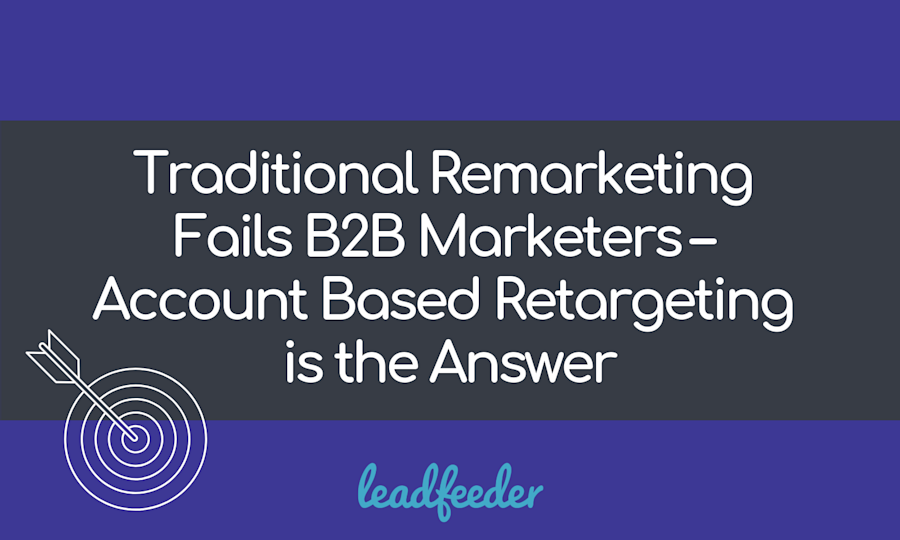
To remedy that, our post on Traditional Remarketing Fails B2B Marketers – Account Based Retargeting is the Answer explains how you can use Leadfeeder together with our friends over at Metadata.io to retarget ads to an entire account (including account based ads on LinkedIn and other social media platforms).
Take your B2B marketing to the next level
B2B marketing (and digital marketing, more broadly) changes every day, and there’s always a next level for even the most advanced B2B marketers. By honing in on the next step for your B2B marketing journey—and learning from the guides above—you can continue to drive better results for your company.
Note: Want to generate more B2B leads from your website? Sign up and try Leadfeeder free for 14 days to see the companies that visit your website, which pages they look at, and more.
B2B marketing FAQs
How can you track ROI for B2B marketing?
The three most important KPIs to track to measure B2B marketing performance are marketing qualified leads (MQLs), lead quality, and revenue contributed.
Measuring MQLs allows you to identify which companies your marketing campaigns are reaching, nurturing, and sending to your website, while lead quality helps to assess whether these companies will convert to customers. At the end of the conversion path, you will need a marketing attribution model to measure how all your B2B marketing efforts contribute to revenue.
What is B2B lead scoring?
Lead scoring involves ranking prospective clients so that you target the most likely to convert with your best marketing efforts. It is an important method for improving customer experience, lead nurturing, sales efficiency, and, ultimately, B2B marketing ROI.
What is the B2B marketing rule of seven?
The rule of seven is the simple idea that it will take an average of seven exposures for a prospect to become a B2B client. Although B2B marketing ideas are constantly developing and changing, this rule is as relevant now as when it was first introduced by Jonathan Hedger.
Now that you're here
Leadfeeder is a tool that shows you companies that visit your website. Leadfeeder generates new leads, offers insight on your customers and can help you increase your marketing ROI.
If you liked this blog post, you'll probably love Leadfeeder, too.
Sign up






